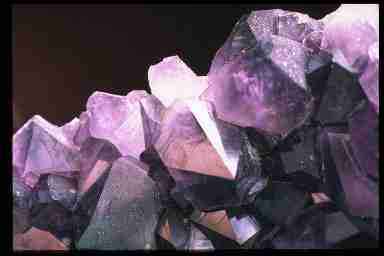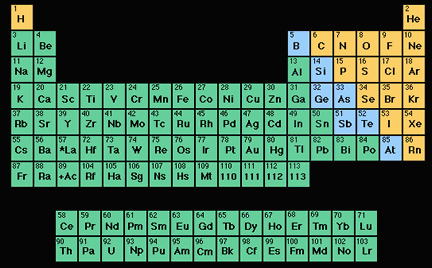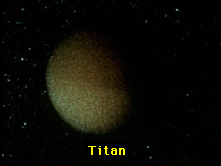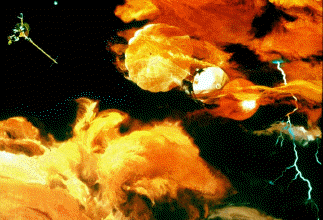This is a drawing showing the composition of the interior of Titan.
The Composition of Titan
Titan's
atmosphere is roughly 90% Nitrogen, and 10% other complex molecules such as methane. The composition of Titan's atmosphere is very similar to the Earth's which is also 80% Nitrogen.
Titan's interior is primarily composed of water ice of different phases with mountains of ice exposed at its suraface. The drawing shows a possible layout of the different phases of ice in Titan's interior. In this respect, Titan is very much like other icy moons.
Deep inside Titan are to be found the more heavier, rocky and metal elements such as silicates and iron. These form the core of Titan.
You might also be interested in:

Minerals occur naturally on rocky planets and form the building blocks of rocks. They are non-living, solid, and, like all matter, are made of atoms of elements. There are many different types of minerals
...more
An element (also called a "chemical element") is a substance made up entirely of atoms having the same atomic number; that is, all of the atoms have the same number of protons. Hydrogen, helium, oxygen,
...more
Titan's atmosphere is a lot like the Earth's, except that it is very cold, from -330 degrees to -290 degrees! Like the Earth, there is a lot of Nitrogen and other complex molecules. There also may be an
...more
Titan's atmosphere is a lot like the Earth's, except that it is very cold, from -330 degrees to -290 degrees! Like the Earth, there is a lot of Nitrogen and other complex molecules. There also may be an
...more
In many respects Titan is similar to the other icy moons, but Titan is the only icy moon to have an atmosphere that can be compared to other planets'. It is natural to ask how is this possible since Titan
...more
Pandora is a small moon of Saturn. It was discovered by S. Collins and others in 1980 from photos taken by the Voyager 1 spacecraft. Pandora's name comes from Greek mythology. Pandora was the first woman,
...more
Prometheus is a small moon of Saturn. It was discovered by S. Collins and others in 1980 from photos taken by the Voyager 1 spacecraft. This moon's name comes from Greek mythology. Prometheus was a Titan
...more














